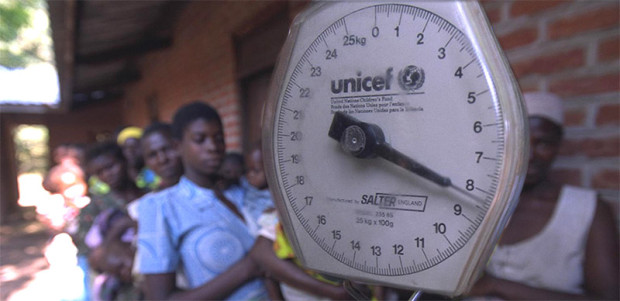 UNICEF and ARM last month (yes, we’re late to the party!) announced a new partnership that will see them explore how wearable technology can be used to improve access to basic health, education and support services for children in emerging markets. Among the initiatives to be undertaken is a ‘Wearables for Good’ challenge that will ask developers, designers, community partners and problem-solvers “to design a wearable device that offers a cost-effective, efficient, and sustainable solution to pressing maternal, newborn or child health problems.”
UNICEF and ARM last month (yes, we’re late to the party!) announced a new partnership that will see them explore how wearable technology can be used to improve access to basic health, education and support services for children in emerging markets. Among the initiatives to be undertaken is a ‘Wearables for Good’ challenge that will ask developers, designers, community partners and problem-solvers “to design a wearable device that offers a cost-effective, efficient, and sustainable solution to pressing maternal, newborn or child health problems.”
“Today, wearable technologies are primarily focused on applications such as fitness and the quantified self,” said Denise Gershbein, Executive Creative Director at frog. “However, there are countless opportunities for wearable and sensor technology to make more of an impact in emerging markets, particularly in the next wave of social impact development. With the ‘Wearables for Good’ challenge we hope to foster dialogue among new partners and increase cross-discipline innovation.”
The focus of the challenge is on developing solutions that could help improve emergency and disaster alerts and response, assist the diagnosis and treatment of diseases or improve hygiene and nutrition.
The design challenge will be run in collaboration with global product strategy and design firm frog. Applications will be accepted until August 4th. Two winners will be announced this fall. Each will receive US$15,000 as well as incubation and mentorship support from ARM and frog.
The winning solutions will not only help solve a particular social challenge but will also need to be cost-effective, offer long battery life, be rugged and durable to withstand a variety of environments and be scalable so that it can be easily applied to a range of environments and communities.
Aside from the Wearables for Good challenge, UNICEF and ARM will work together on a number of pilot projects to see which ones can be scaled up to a national level. They will also look at opportunities to promote market opportunities for solutions for mobile financial services, identity, transportation, learning and wearable/sensor technology in those emerging markets.
It will be interesting to see what solutions emerge as part of the Wearables for Good challenge.
Sources : Wearables for Good // ARM
